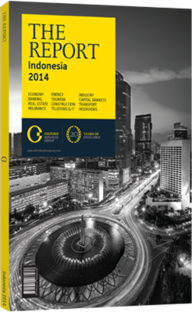This chapter includes the following articles.
Agriculture

In 2013 the agriculture sector accounted for 14.4% of total GDP. Food crops represented the largest segment, with more than half of the industry’s value. Tasked with providing sustenance for the country’s nearly 250m citizens while contributing a steady stream of export revenue, the Indonesian agriculture sector remains an indispensable industry with an influence that extends across a broad spectrum of the social, political and economic landscape. Rice, maize, and soybean are among the most widely grown crops and are cultivated primarily for domestic consumption. With a total output of 70.86 tonnes in 2013, rice is the dominant staple food. The government is focusing on food price volatility and increasing the contribution of domestic production to consumption in the country. Although the days of double-digit expansions for plantation crop acreage are now in all likelihood a thing of the past, continued demand should be enough to sustain profits for large agro-industrial exporters.
This chapter contains interviews with Franky Oesman Widjaja, President Commissioner, Sinar Mas Agribusiness and Food; and Franciscus Welirang, Director, Indofood.

